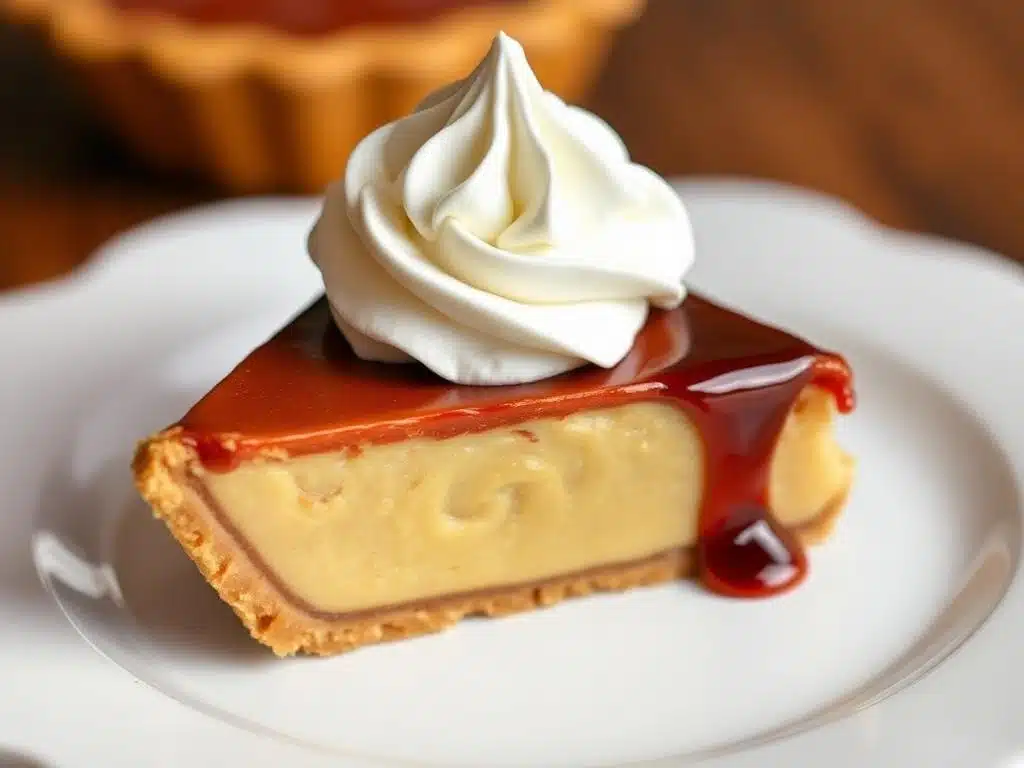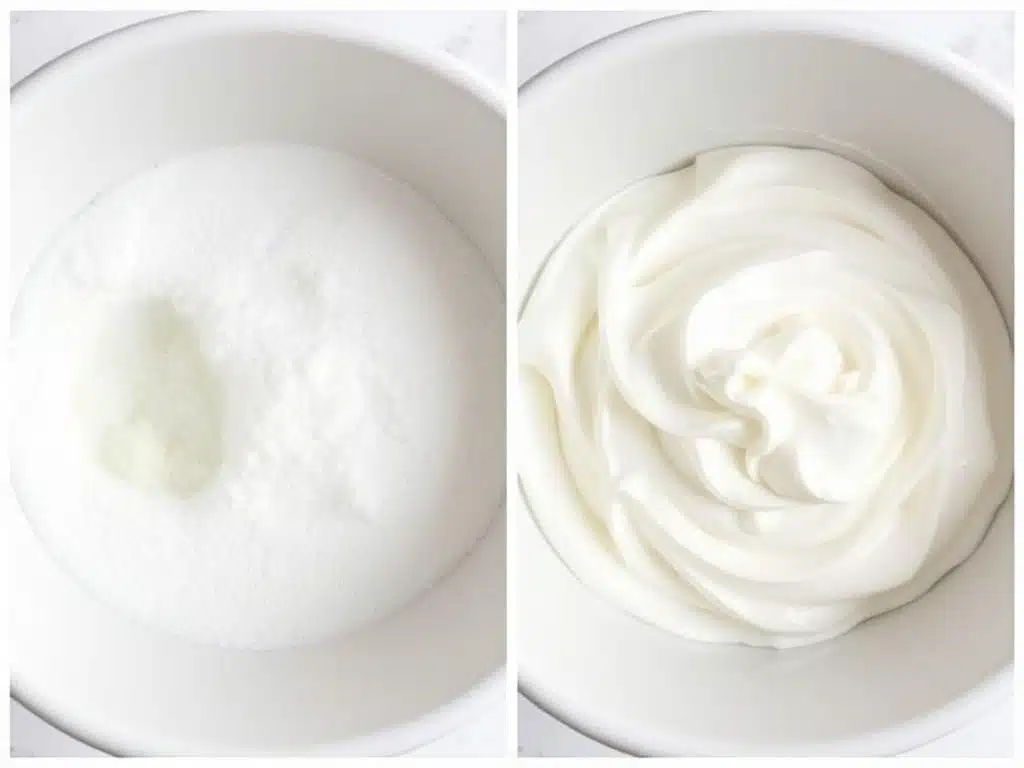When it comes to coffee and dessert toppings, two contenders often steal the spotlight: cold foam and whipped cream. While they may seem similar at first glance, these two delightful toppings have distinct characteristics that set them apart. In this article, we’ll dive deep into the world of cold foam and whipped cream, exploring their ingredients, textures, uses, and even their nutritional profiles. By the end, you’ll have a clearer understanding of whether cold foam is just whipped cream in disguise or if it stands on its own as a unique topping. So, let’s get started!
Understanding Cold Foam and Whipped Cream
Definition of Cold Foam
Cold foam is a frothy topping made primarily from milk, often non-fat or low-fat, that’s whipped to create a light, airy texture. Unlike traditional whipped cream, which is rich and creamy, cold foam is designed to be lighter and less caloric. It’s often used in coffee drinks, adding a velvety texture without overwhelming the beverage. The process of making cold foam involves aerating the milk using a frother or a blender, which creates tiny bubbles that give it that signature frothy appearance.
Definition of Whipped Cream
On the other hand, whipped cream is a classic topping made from heavy cream that’s whipped until it forms soft peaks. This indulgent treat is often sweetened with sugar and can be flavored with vanilla or other extracts. Whipped cream is rich, creamy, and has a luxurious mouthfeel, making it a favorite for desserts like pies, cakes, and sundaes. The process of whipping cream incorporates air, resulting in a thick, fluffy texture that holds its shape beautifully.
- Understanding Cold Foam and Whipped Cream
- Purpose of the Article
- The Science Behind Cold Foam and Whipped Cream
- Key Differences Between Cold Foam and Whipped Cream
- Nutritional Comparison
- Popularity and Trends
- Frequently Asked Questions About Cold Foam vs. Whipped Cream
- Conclusion Cold Foam VS. Whipped Cream
Purpose of the Article
So, why compare cold foam and whipped cream? As coffee culture continues to evolve, more people are discovering the joys of cold foam, especially in trendy coffee shops. Meanwhile, whipped cream remains a beloved staple in the dessert world. This article aims to clarify the differences between these two toppings, helping you decide which one to use in your next coffee or dessert creation. We’ll explore their ingredients, textures, nutritional values, and even their popularity in today’s culinary landscape. By the end, you’ll be equipped with all the knowledge you need to choose the perfect topping for your next treat!
The Science Behind Cold Foam and Whipped Cream
Understanding the science behind cold foam and whipped cream is essential to appreciate their unique qualities. In this section, we’ll explore what makes each topping special, from their ingredients to the processes used to create them.
What is Cold Foam?
Ingredients Used in Cold Foam
Cold foam is typically made from milk, often non-fat or low-fat, which contributes to its light texture. Some recipes may include flavorings like vanilla or sweeteners, but the primary focus is on the milk itself. The absence of heavy cream is what sets cold foam apart from whipped cream, making it a lighter option for those looking to enjoy a frothy topping without the extra calories.
The Process of Making Cold Foam
Creating cold foam is a straightforward process. First, you pour the milk into a frothing pitcher or a blender. Then, using a frother or a blender, you aerate the milk until it becomes frothy and light. The key here is to incorporate air into the milk without heating it, which is why cold foam is often used in iced beverages. The result is a creamy, airy topping that can be dolloped on top of your favorite coffee drink, adding a delightful texture without overwhelming the flavor.
Texture and Consistency of Cold Foam
The texture of cold foam is light and airy, with tiny bubbles that create a frothy appearance. It’s less dense than whipped cream, which allows it to float on top of beverages without sinking. This unique consistency makes cold foam an excellent choice for iced coffees, as it adds a refreshing element without being overly rich.
What is Whipped Cream?
Ingredients Used in Whipped Cream
Whipped cream is made from heavy cream, which contains a higher fat content than milk. This fat is crucial for achieving the rich, creamy texture that whipped cream is known for. Sugar is often added to sweeten the cream, and flavorings like vanilla extract can enhance its taste. The combination of these ingredients results in a decadent topping that pairs beautifully with a variety of desserts.
The Process of Making Whipped Cream
Making whipped cream is a bit different from cold foam. To whip cream, you start by chilling your mixing bowl and beaters, which helps the cream whip more effectively. Then, you pour the heavy cream into the bowl and begin to beat it with a mixer. As you whip, air is incorporated into the cream, causing it to thicken and form soft peaks. The process can take just a few minutes, and it’s essential to stop whipping once you reach the desired consistency to avoid turning it into butter.
Texture and Consistency of Whipped Cream
The texture of whipped cream is thick and creamy, with a smooth mouthfeel that melts in your mouth. It holds its shape well, making it perfect for topping desserts like cakes and pies. Unlike cold foam, whipped cream is dense and rich, providing a luxurious experience that many people love.
Key Differences Between Cold Foam and Whipped Cream
While cold foam and whipped cream may both serve as delightful toppings, they have distinct differences that set them apart. In this section, we’ll delve into their ingredients, textures, and common uses, helping you understand why you might choose one over the other.
Ingredients Comparison
Dairy vs. Non-Dairy Options
One of the most significant differences between cold foam and whipped cream lies in their ingredients. Cold foam is primarily made from milk, often non-fat or low-fat, which makes it a lighter option. This is particularly appealing for those looking to reduce their calorie intake while still enjoying a frothy topping.
In contrast, whipped cream is made from heavy cream, which has a much higher fat content. This richness contributes to its creamy texture and flavor. Additionally, while traditional whipped cream is dairy-based, there are non-dairy alternatives available, such as coconut cream or soy-based whipped toppings. However, these alternatives may not achieve the same texture as traditional whipped cream.
Sweeteners and Flavorings
When it comes to sweeteners, whipped cream typically contains sugar, which enhances its flavor and makes it a perfect complement to desserts. You can also find flavored whipped creams, such as chocolate or vanilla, which add an extra layer of taste.
Cold foam, on the other hand, may or may not include sweeteners. Many coffee shops offer plain cold foam, allowing the coffee’s flavor to shine through. However, some recipes do incorporate sweeteners or flavorings, making it versatile for various beverages.
Texture and Consistency
How Cold Foam Differs in Texture from Whipped Cream
The texture of cold foam is light and airy, with tiny bubbles that create a frothy appearance. This unique consistency allows it to float on top of iced beverages without sinking, providing a refreshing contrast to the drink below. Cold foam is designed to be less dense, making it an excellent choice for those who prefer a lighter topping.
In contrast, whipped cream is thick and creamy, with a smooth, velvety texture. It holds its shape well, making it ideal for decorating desserts. The richness of whipped cream provides a satisfying mouthfeel that many people find indulgent.
Visual Differences
Visually, cold foam and whipped cream are quite distinct. Cold foam has a frothy, cloud-like appearance, often resembling a light layer of bubbles on top of a drink. Whipped cream, however, is denser and can be piped into decorative shapes, making it visually appealing for desserts. The contrast in appearance can influence your choice depending on the presentation you desire.
Uses in Beverages and Desserts
Common Drinks that Use Cold Foam
Cold foam has gained popularity in coffee culture, particularly in iced coffee drinks. It’s often used in beverages like cold brew, iced lattes, and specialty coffee drinks. The light texture of cold foam complements the coffee without overpowering it, making it a favorite for those who enjoy a refreshing coffee experience.
Common Desserts that Use Whipped Cream
Whipped cream, on the other hand, is a classic topping for a wide range of desserts. From pies and cakes to sundaes and fruit salads, whipped cream adds a rich, creamy element that enhances the overall flavor. Its ability to hold its shape makes it perfect for decorating desserts, creating an inviting presentation.
Nutritional Comparison
When choosing between cold foam and whipped cream, understanding their nutritional profiles can help you make an informed decision. In this section, we’ll compare their caloric content and discuss the nutritional benefits and drawbacks of each topping.
Caloric Content
Average Calories in Cold Foam vs. Whipped Cream
The caloric content of cold foam and whipped cream varies significantly due to their different ingredients.
- Cold Foam: Typically, a serving of cold foam (about 2 tablespoons) contains around 15 to 30 calories, depending on whether sweeteners or flavorings are added. Since it’s primarily made from low-fat or non-fat milk, it’s a lighter option for those watching their calorie intake.
- Whipped Cream: In contrast, a serving of whipped cream (also about 2 tablespoons) can contain anywhere from 30 to 50 calories or more, depending on the sugar content and whether it’s made from heavy cream or a lighter alternative. The higher fat content contributes to its richer flavor and texture, but it also means more calories.
This difference in caloric content can be a deciding factor for those who are health-conscious or looking to reduce their calorie consumption while still enjoying a delicious topping.
Nutritional Benefits and Drawbacks
Health Aspects of Cold Foam
Cold foam offers some nutritional benefits, particularly for those seeking a lighter option. Since it’s made from milk, it provides some protein and calcium, which are essential for bone health. Additionally, using non-fat or low-fat milk can help reduce saturated fat intake, making it a heart-healthier choice.
However, cold foam may lack the richness and satisfying mouthfeel that many people enjoy in whipped cream. If you’re looking for a more indulgent experience, cold foam might not fully satisfy your cravings.
Health Aspects of Whipped Cream
Whipped cream, while richer and more decadent, does come with its own set of nutritional considerations. The high-fat content can provide a satisfying and creamy texture, making it a favorite for many dessert lovers. However, it’s important to be mindful of portion sizes, as the calories can add up quickly.
On the positive side, whipped cream can be made with organic or grass-fed heavy cream, which may offer some additional nutrients and healthier fats. Additionally, there are non-dairy whipped cream alternatives available that can cater to those with dietary restrictions.
In summary, while cold foam is a lighter option with fewer calories, whipped cream provides a richer, more indulgent experience. Your choice may depend on your dietary goals and the type of beverage or dessert you’re enjoying.
Popularity and Trends
As coffee culture and dessert trends continue to evolve, both cold foam and whipped cream have carved out their own niches. In this section, we’ll explore the rise of cold foam in coffee culture and the timeless appeal of whipped cream.
Rise of Cold Foam in Coffee Culture

How Cold Foam Became Popular
In recent years, cold foam has surged in popularity, particularly in specialty coffee shops. This frothy topping has become a go-to choice for iced coffee drinks, offering a light and airy texture that enhances the overall experience. The trend can be attributed to the growing demand for refreshing, low-calorie options that still provide a satisfying mouthfeel.
Social media has played a significant role in the rise of cold foam. Platforms like Instagram and TikTok have showcased visually appealing coffee drinks topped with cold foam, enticing coffee lovers to try this trendy addition. As more people share their cold foam creations online, the topping has gained traction, becoming a staple in many coffee shops.
Social Media Influence
The influence of social media cannot be overstated. Coffee enthusiasts are constantly on the lookout for the next big thing, and cold foam fits the bill perfectly. Its unique texture and ability to elevate iced beverages have made it a favorite among influencers and coffee aficionados alike. As a result, many coffee shops have started to experiment with different flavors and variations of cold foam, further fueling its popularity.
Whipped Cream’s Timeless Appeal

Historical Significance of Whipped Cream
While cold foam is a relatively new trend, whipped cream has a long-standing history in the culinary world. Dating back to the 16th century, whipped cream has been a beloved topping for desserts across various cultures. Its rich, creamy texture has made it a staple in many classic recipes, from pies to cakes.
Whipped cream’s versatility is one of the reasons it has remained popular over the years. It can be used in both sweet and savory dishes, making it a go-to topping for a wide range of desserts. Whether it’s a dollop on a slice of pie or a swirl atop a hot chocolate, whipped cream continues to be a favorite for many.
Current Trends in Whipped Cream Usage
In recent years, whipped cream has also seen a resurgence in popularity, particularly with the rise of gourmet and artisanal desserts. Chefs and home bakers alike are experimenting with flavored whipped creams, incorporating ingredients like chocolate, coffee, and even spices to create unique toppings. Additionally, the availability of non-dairy whipped cream alternatives has expanded its appeal to those with dietary restrictions.
Whipped cream remains a classic choice for many dessert lovers, and its ability to elevate a dish’s presentation and flavor keeps it relevant in today’s culinary landscape.
Frequently Asked Questions About Cold Foam vs. Whipped Cream
In this section, we’ll address some common questions about cold foam and whipped cream. Whether you’re curious about their preparation, storage, or how to use them in your favorite recipes, we’ve got you covered!
Can You Make Cold Foam at Home?
How to Prepare Cold Foam
Absolutely! Making cold foam at home is simple and requires just a few ingredients. Here’s a quick method to prepare it:
- Ingredients: You’ll need cold milk (non-fat or low-fat works best), a sweetener (optional), and flavorings (optional).
- Equipment: A milk frother, blender, or even a jar with a lid can be used.
- Instructions:
- Pour the cold milk into your frothing pitcher or jar.
- If desired, add sweeteners or flavorings.
- Use a frother or blender to aerate the milk until it becomes frothy and light. If using a jar, shake vigorously until frothy.
- Spoon the cold foam over your iced coffee or beverage of choice.
Tips for Best Results
For the best results, ensure your milk is very cold before frothing. This helps achieve a better texture. Experiment with different types of milk (like almond or oat) to find your preferred flavor and consistency.
Can You Make Whipped Cream at Home?
How to Prepare Whipped Cream
Yes, making whipped cream at home is also quite easy! Here’s a simple recipe:
- Ingredients: Heavy cream, sugar (to taste), and vanilla extract (optional).
- Equipment: A mixing bowl and an electric mixer or whisk.
- Instructions:
- Chill your mixing bowl and beaters in the refrigerator for about 15 minutes.
- Pour the heavy cream into the chilled bowl.
- Add sugar and vanilla extract if desired.
- Beat the cream on medium-high speed until soft peaks form. Be careful not to over-whip, as it can turn into butter.
Storage Tips
Homemade whipped cream is best used fresh, but it can be stored in the refrigerator for up to 2 days. If it starts to separate, gently re-whip it before serving.
How Long Do Cold Foam and Whipped Cream Last?
Shelf Life of Cold Foam
Cold foam is best enjoyed fresh, as it can lose its frothy texture over time. If stored in the refrigerator, it may last for a few hours but is best used immediately after preparation.
Shelf Life of Whipped Cream
Homemade whipped cream can last in the refrigerator for about 2 days. Store it in an airtight container to maintain its texture. Store-bought whipped cream, on the other hand, often contains stabilizers that can extend its shelf life, so always check the expiration date on the packaging.
Can You Use Cold Foam and Whipped Cream Together?
Combining the Two Toppings
Yes! You can absolutely use cold foam and whipped cream together for a unique and indulgent experience. For example, you might top a rich dessert with whipped cream and then add a layer of cold foam for an interesting texture contrast. This combination can elevate both coffee drinks and desserts, providing a delightful mix of flavors and textures.
Conclusion Cold Foam VS. Whipped Cream
In this exploration of cold foam and whipped cream, we’ve uncovered the unique qualities, nutritional profiles, and culinary uses of these two popular toppings. Both have their own distinct appeal, making them favorites in the world of beverages and desserts.
Summary of Key Points
- Cold Foam: A light and airy topping made primarily from milk, cold foam has gained popularity in coffee culture, particularly for iced beverages. Its lower calorie content and refreshing texture make it an appealing choice for those seeking a lighter option. Cold foam can be easily made at home and is often customizable with various flavors.
- Whipped Cream: A rich and creamy topping made from heavy cream, whipped cream has a long-standing history in desserts. Its indulgent texture and versatility make it a classic choice for a wide range of sweet treats. Whipped cream can also be prepared at home and is available in both dairy and non-dairy options.
Choosing Between Cold Foam and Whipped Cream
When deciding between cold foam and whipped cream, consider the context of your beverage or dessert. If you’re looking for a lighter, frothy topping to complement an iced coffee, cold foam is an excellent choice. On the other hand, if you want a rich, creamy addition to a slice of pie or a sundae, whipped cream is the way to go.
Ultimately, both toppings have their place in the culinary world, and your choice may depend on personal preference, dietary considerations, or the specific dish you’re enjoying.
Encouragement to Experiment
We encourage you to experiment with both cold foam and whipped cream in your own kitchen. Try creating your own flavored cold foam to top your favorite iced drinks, or whip up a batch of homemade whipped cream to elevate your desserts. The possibilities are endless, and you may discover new combinations that delight your taste buds.
Thank you for joining us on this journey through the world of cold foam and whipped cream! Whether you prefer the lightness of cold foam or the richness of whipped cream, both toppings offer delicious ways to enhance your culinary creations. Enjoy your next coffee or dessert adventure!
To enhance your culinary creations, understanding the various toppings and ingredients can make a significant difference. For instance, if you’re interested in learning how to make cold foam at home, check out our detailed guide on how to make cold foam. Additionally, if you’re curious about the versatility of sweet toppings, you might find our article on sweet cream insightful. For those who enjoy experimenting with flavors, consider trying our pumpkin banana loaf recipe, which pairs wonderfully with whipped cream. Lastly, if you’re a fan of coffee, our cold foam guide provides tips on how to elevate your iced beverages.

